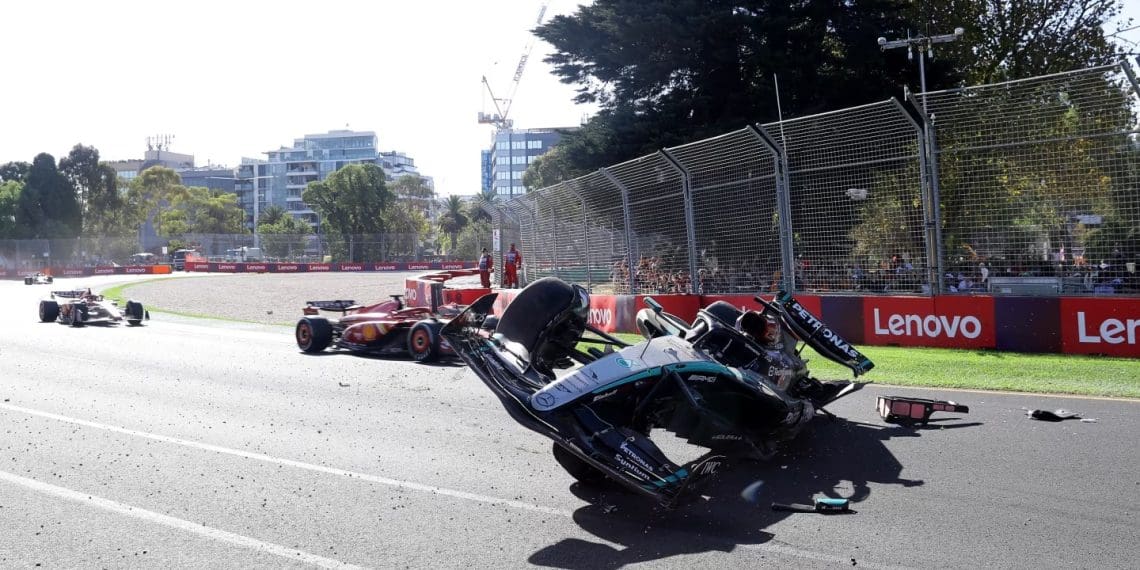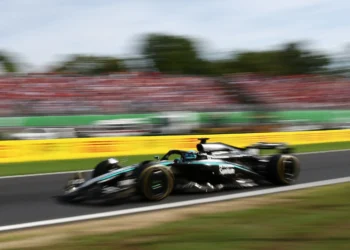The 2024 Australian Grand Prix saw George Russell’s frightening crash at the Turn 6-7 complex, reigniting long-standing safety concerns at Albert Park. Russell’s wrecked Mercedes bounced back onto the racing line after hitting the barriers—an outcome that could have led to an even more catastrophic multi-car collision.
Now, the FIA has taken action, announcing critical safety modifications to the high-speed corner sequence ahead of the 2025 race.
What Happened at Albert Park?
🚀 Russell’s crash occurred after he was caught off guard by Fernando Alonso’s early braking, forcing him into the run-off area before slamming into the barriers.
🚨 His damaged car rebounded onto the track, creating a potential secondary impact risk for oncoming drivers.
⚠️ Williams’ Alex Albon also crashed at the same location during free practice, further highlighting the dangers of the newly altered Turn 6-7 layout.
Ahead of the 2024 event, track modifications widened and quickened the Turn 6-7 section, but those changes increased the likelihood of high-speed crashes.
Now, in response to driver concerns, the FIA has introduced a three-pronged safety upgrade for 2025.
FIA’s New Safety Modifications for Turn 6-7
The FIA confirmed it had reviewed the incidents at Albert Park and, in collaboration with local race organizers, has approved several key changes:
1️⃣ Barrier Re-Profiling to Prevent Track Re-Entry
- The barrier on the left-hand side of Turn 7 has been repositioned to reduce the risk of cars bouncing back onto the racing line.
- This prevents secondary collisions, a major concern after Russell’s crash in 2024.
2️⃣ Kerb Design Overhaul to Prevent Car Instability
- The transition from positive to negative kerbs has been eliminated, removing the possibility of F1 cars getting unsettled when running wide.
- The FIA noted that the previous kerb modification (grinding the surface) was only a temporary fix, and this redesign will ensure a smoother, more predictable driving experience.
3️⃣ Extended Gravel Trap for Better Run-Off Protection
- The gravel trap now extends fully to the edge of the kerbs, preventing cars from skidding uncontrollably toward the barriers.
- This should help reduce the severity of crashes at Turn 6-7.
FIA’s Statement on the Safety Overhaul
“Following a review of last year’s event at Albert Park, several changes to Turn 6 and Turn 7 have been approved in collaboration with the local ASN and the grand prix organizers.”
“These changes were proposed based on feedback from the FIA Safety Department following their ongoing analysis of all circuits, as well as input from drivers and teams.”
“They aim to provide improvement in safety whilst maintaining corner dynamics and exciting racing.”
Will These Changes Work?
The modifications appear well-calculated to strike a balance between safety and maintaining Albert Park’s high-speed flow.
🏁 Reprofiling the barriers will mitigate secondary impact risks.
🏎️ Flattening the kerbs will ensure greater stability for drivers exiting Turn 6.
🛑 Expanding the gravel trap provides better braking zones for out-of-control cars.
Albert Park remains one of the most technical street circuits on the F1 calendar, and these updates should ensure better driver protection without compromising the circuit’s thrilling high-speed nature.
Final Thoughts: FIA’s Proactive Response
The FIA’s decision to act swiftly following Russell’s crash is a positive step toward preventing future major accidents at Turn 6-7.
But the big question remains: Will the changes be enough to prevent similar high-speed incidents in 2025?
With driver and team input shaping the updates, there’s reason to believe Albert Park will now be safer—but only time will tell if the modifications are enough.










